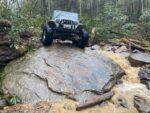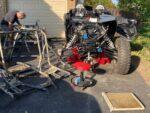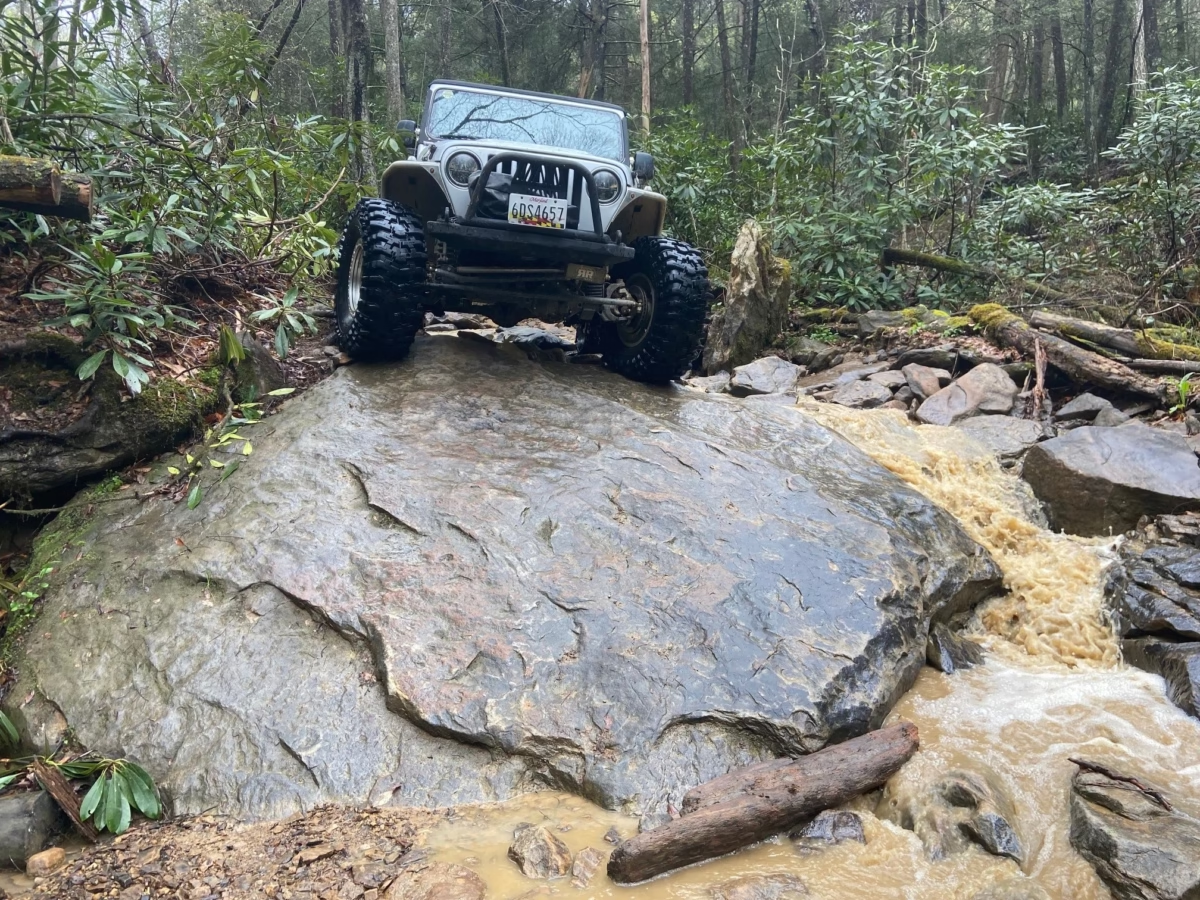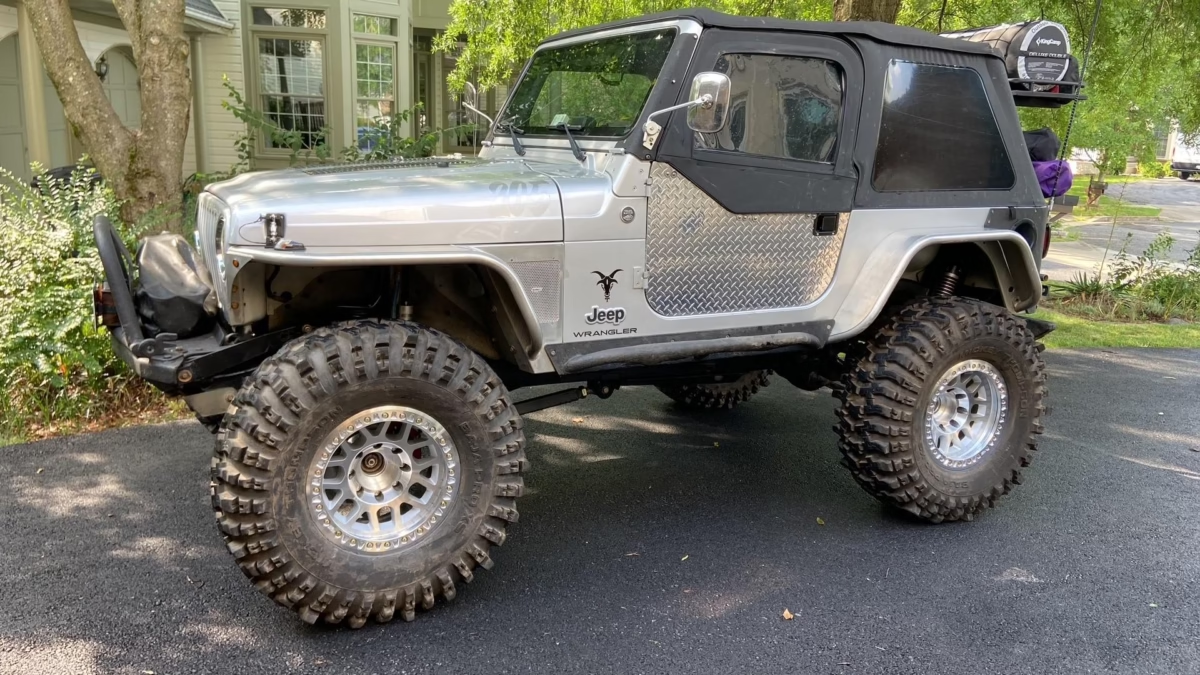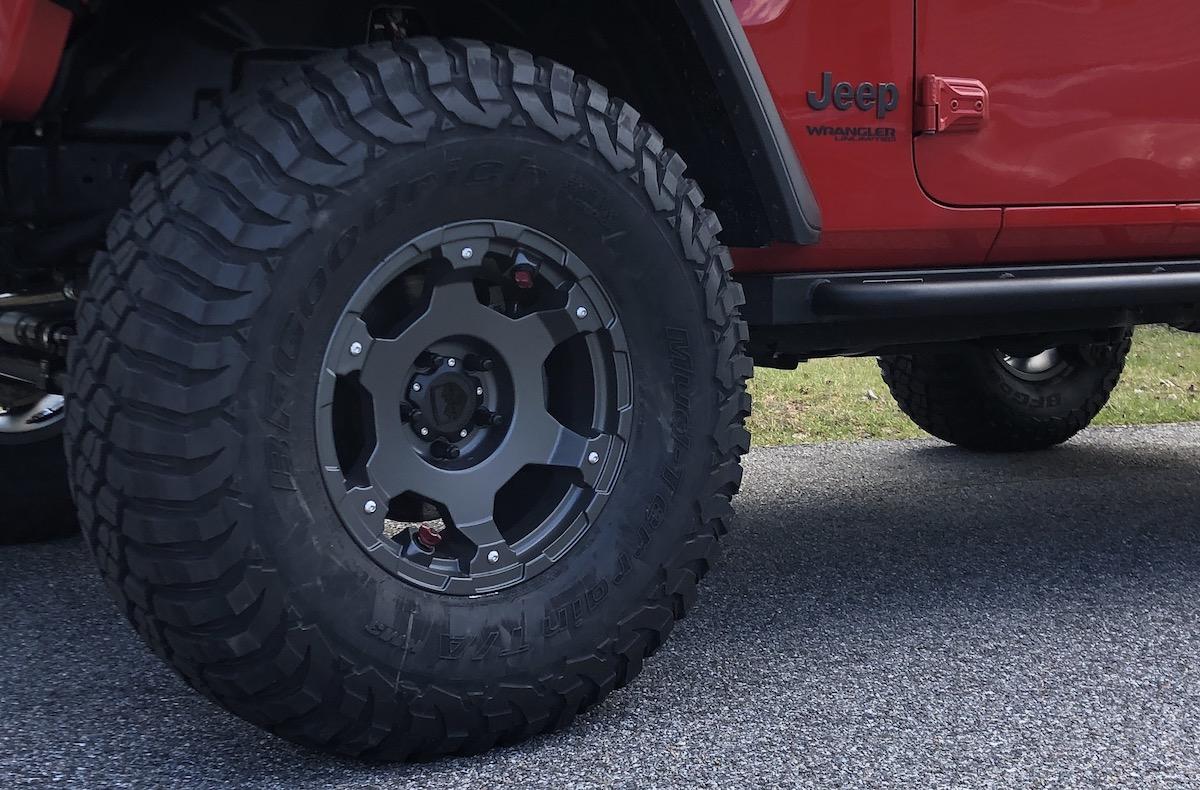Tires are without a doubt one of the biggest factors when it comes to off-road performance. In a world where there are literally hundreds, if not thousands, of available “performance” parts for every vehicle, few things have as direct an impact when it comes to getting your rig through obstacles.
Six months of extensive testing with the Pit Bull Rocker Radial tires where they were subjected to a wide variety of terrain and weather conditions across four states. It allowed us to really get a feel for just how well these tires performed off-road and determined whether they lived up to Pit Bull’s claims of a “super tough Radial tire that will provide extreme grip in almost any terrain”.
Rocks

In our experience few natural terrain features are as technically challenging as running the rocks. Unless you are running around with a full tube cage and 40+ inch tires it’s something you’ll probably conquer faster, and certainly with less damage, with proper tire placement and a well thought out line versus a heavy foot and horsepower.
With rock crawling in mind, we found as many boulders and rock gardens as we could to see just how well these tires lived up to the name “Rocker”. Performance on the rocks had some give and take depending on the weather. I found the rubber compound to be a little harder than expected and while they did very well on all manner of rocks during dry conditions, they struggled to grip smooth rocks during wet weather conditions. This isn’t unusual for a radial tire that is designed with a dual purpose use in mind, I just expected more.
Don’t be discouraged though, this tire has one key feature I felt that gave it an advantage over many of the others I have tested. The one thing that made this tire perform above average in the rocks is its asymmetrical tread pattern and wow does this make a difference when tackling loose rocks, jagged rocks, and anything with a ledge, edge, or protrusion. Lots of tires have a very symmetrical pattern and get stuck simply because they are limited by the terrain features their tires are capable of gripping.
Similar to the definition of insanity, it is crazy to think that if lugs are the same size, shape, and spacing apart that one lug will magically catch where the previous lugs with the same design didn’t. Pit Bull Rocker Radials have a very unique tread pattern that just wants to bite and grab anything and everything within its reach. If you think you’re stuck then just keep spinning those tires and turning that steering wheel and if there is anything for this tire to catch, it will. While I can’t explain why or how Pit Bull Tires decided on the particular shapes and patterns on this tire, I do know that it works.
Mud
Mud is one of those things that either you love or you hate, but often times when doing trails there are just areas where it is unavoidable and it’s generally something you don’t want to get stuck in.
If you look at the Pit Bull Rocker Radial you will immediately notice the large lugs and wide voids designed to help clean out the tires. My little 4.0 engine doesn’t produce enough juice to spin some of the large tires I’ve tested fast enough to clean themselves out in a thick mud while continuing forward movement.
While testing the Pit Bull Rocker Radials though I didn’t encounter that problem, and thanks to the lug design I was able to clean them out at a much lower tire speed. This allowed me to tackle mud pits I wouldn’t otherwise think about playing in. In fact I would go so far as to say that Pit Bull Rocker Radials excel in mud. Even in deep ruts where my axles prevented the bottom of my tires from making full contact with the ground I found the lugs that run over the shoulder of the tire and partially down the side wall did an impressive job of grabbing and pulling me through some really nasty holes. If mud is something you encounter often this is a great choice in tire.
Dirt and Sand

When it comes to dirt there isn’t much to say. As with most tires we’ve tested the Pit Bull Rocker Radials got me through everything I asked it to when it came dirt, whether it was soft or hard packed.
I will add that when vegetation is thrown in the mix, such is often the case with roots, the large lugs on this tire did a great job of pulling themselves over most obstacles without losing traction or spinning the tires. This helps keeps the trails in good condition and aids our “tread lightly” philosophy.
While testing over here on the east coast I was limited on opportunities to try these tires in the sand but I did manage to venture down to the Outer Banks of North Carolina for a run on the beach. Let’s be real, traversing wet or hard packed sand isn’t a difficult task for most tires. That being said I was pleasantly surprised when I drove between the small dunes more inland to find that the tires pulled me forward with ease rather than trying to bury themselves. While my testing in the sand was pretty limited I still feel confident that these tires will perform above average in most dirt and sand environments.
Snow

Unfortunately, I was only able to test these tires in the snow while driving on the road, so less than three inches, but my feeling is that these tires will dig hard. So if you’re looking at deep snow and want to float over the top then these probably are not the tires for you. For snow that’s less than the height of your axle housing, I think it’s a safe bet that these will do a good job at getting you through without packing the tread full of snow.
Wrap Up
Initially, I ran these tires at 15psi off-road and was surprised just how stiff this load range C tire was given how large the voids were between the lugs. Large voids are normally a good indicator of a flexible tire as the material between the lugs is thinner and conforms to surface irregularities easier. These took me a couple trips to break them in and in order to get the tires to mold around obstacles like I wanted I had to drop the psi down to about 10 pounds.
As a side note I also found that the lowest psi I was able to run in these tires before they separated from the bead during moderate wheeling was about 8 pounds, but keep in mind these pressures will also depend on the rim you have these tires mounted on. If you’re worried about damage or durability these are some beefy tires with lots of sidewall protection so puncturing, cutting, chipping, and tearing likely won’t be an issue.
The Pit Bull Rocker Radials performance in the dirt and mud was top-notch as the tires gripped well and easily cleaned themselves out. In the rocks they did very well in dry conditions but had average performance when trying to grip wet surfaces. In the sand and snow I haven’t tested them extensively enough to make a final determination but stay tuned for updates. Overall, after testing the Pit Bull Rocker Radials over a wide variety of terrain and weather conditions I would consider them to perform above average off-road when compared to other radial tires with a similar style or design. Watch for the on-road review in the coming days.
